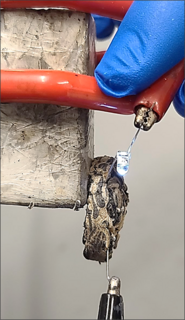Advancing in the cutting-edge world of materials science: Multifaceted Liquids
Exploring the world of materials science is truly fascinating! Janus, the Roman God with two faces, represents the concept of duality. This concept is widely used in science and is associated with the multifunctionality of solid objects. Janus morphology allows control of a solid’s physical properties on both sides, making it a famous and important concept in the field of materials science.
Researchers at the University of Waterloo have developed a unique technique to create the Janus structures in liquids. Chemical Engineering Professor Milad Kamkar in collaboration with the University of British Columbia leads the first research to achieve this duality with liquids.
This breakthrough can be utilized in a multitude of applications. It could be used in environmental remediation to clean up oil spills in water or for wastewater treatment. One side could be treated with super absorbent nanomaterial to soak up the oil while the other side might contain catalysts to degrade the pollution.
The advanced material also has potential biomedical applications, for example in wound dressings. One side could have a drug delivery component while the other could be treated with an antibacterial agent. The two sides work in tandem to aid in the patient's healing process.
The challenge in creating this phenomenon in liquids, as they are inherently shapeless and flow freely, lies in maintaining the segregation of the two distinct properties to prevent them from merging.
Through a novel interfacial assembly process called Liquid Streaming, Kamkar and his collaborators created Janus liquid filaments for the first time. The filaments are infused with nanoparticles. They start from the liquid state then can be transformed into ultra-lightweight and supple aerogels which become solid. This process leads to the development of multifunctional and multi-responsive soft materials with well-defined and tailored characteristics.
Aerogel powering an LED on one side while having magnetic properties on another side

The novel aspect of this breakthrough is that in liquid the materials coexist, but at the same time they do not interrupt each other's network. This characteristic lends itself well to being used to combat electromagnetic waves.
For this application, the research group constructed a filament that has magnetic nanomaterials on one side and electrically conductive nanomaterial on the other. It can stick to a magnet on one side while powering an LED light on the other. These structures showed excellent performance in shielding electromagnetic waves.
The magnetic component can interact with the magnetic part of an electromagnetic wave. The electrically conductive side of the filament can interact with the electric part of the electromagnetic wave, without interfering with each other’s network.
"These meticulously engineered materials, designed with precision across multiple scales, from nano all the way to macro-scale, offer versatile applications in sensitive environments like hospitals and other structures. Their purpose is to protect individuals and delicate equipment, mitigating the adverse effects of electromagnetic waves. This includes shielding against the potential hazards associated with 5G networks, which are recognized for their potential to induce health concerns and disrupt electronic devices," says Kamkar Director of the Multiscale Materials Design Lab.
The next step in this research is to 3D print the material in any desired shape for applications in almost every field.